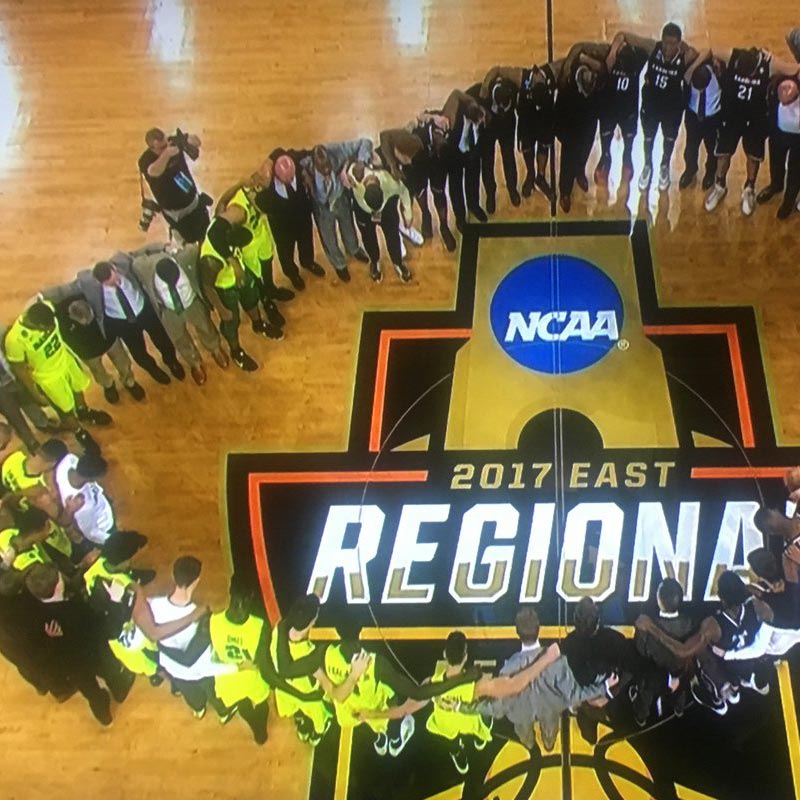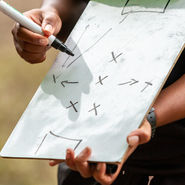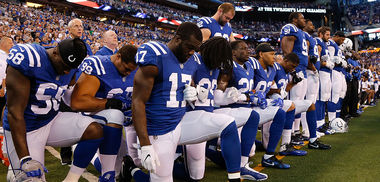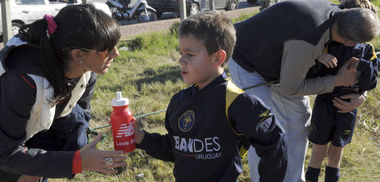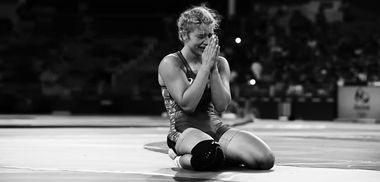While it’s become customary in football, the conclusion of the Baylor/South Carolina Sweet 16 game produced something rarely seen in college basketball: a post-game prayer huddle.
As TBS announcers Verne Lundquist and Jim Spanarkel prepared to put the finishing touches on their broadcast of the game, they were both captured by the scene that unfolded at mid-court.
“Interesting,” Lundquist said. “The celebration started, and Perry Clark one of the assistant coaches (for South Carolina) came out and said, ‘Calm down.’ And look at this. This is a remarkable scene of sportsmanship.”
Both teams huddled together—coaches, players, and other staff—with arms slung around each other and heads bowed. Apparently someone offered a prayer from within the circle though it was not clear who may have initiated it.
The TBS feed quickly moved from showing the circle to other action happening around the court, with the typical frenetic editing we’ve come to expect from our sports media viewing. If this had been TBN instead of TBS, perhaps we could have absorbed a longer view of this rare occurrence and been able to appreciate the moment with Lundquist and Spanarkel who were properly silent—even reverent?—given the unexpectedness of the gesture.
But whatever. As Spanarkel finally said, “It’s a great scene.”
Postgame for South Carolina and Baylor pic.twitter.com/FcJSo0F7PL
— Joe Fleming (@ByJoeFleming) March 25, 2017
Christian folk love to see these moments of piety exercised in public settings, while the faith’s more numerous cultured despisers love equally to mock them.
Seeing South Carolina’s fiery, unapologetically crass head coach Frank Martin juxtaposed with all things currently Baylor in a prayer circle—combined with all the other narratives of the lives represented there—can be interpreted in many ways depending on the lenses you choose.
For some, it’s fodder for late night talk show monologues and a blatant public illustration of hypocrisy.
For others, it’s the very gospel itself, the kingdom of heaven somehow redeeming a moment dripping in idolatry and layers of brokenness, an emotional mixture of victory and defeat all rolled into one mass of athletic humanity.
When Jesus asked rhetorically, “What is the kingdom of God like? To what can I compare it?” he answered his own question with illustrations of small acts producing large results over time (Luke 13: 18-21).
A tiny seed that gets thrown into a garden, that in time becomes a tree with branches that many birds come to live among. A small amount of yeast mixed with three times the amount of flour, only to have the yeast expand the flour over time into a bread that could be eaten and enjoyed by many.
In the case of a post-game prayer circle we can embrace two realities, both good reminders regarding the truth of public displays of religiosity.
Get our "Top Articles" sent to your inbox weekly.
On one hand, let’s not overstate the religious or evangelical importance of a post-game prayer circle and project a ton of meaning onto the faith of the players or coaches or their desires to see God’s will be done on earth as it is in heaven. People wind up in prayer circles for a whole host of reasons, too often for one’s that don’t align with anything close to God’s will.
Chances are good that men of faith are in the circle, but trying to discern the motives of our own hearts is difficult enough—navigating the intentions of others practically impossible.
But on the other, any time the gospel gets put on display, anytime there is a recognition, a moment of silence, a tip of the hat in the direction of transcendent realities, we can be encouraged for the reminder that the kingdom of heaven is indeed spreading, imperceptibly making its way toward a time when every knee will bow and every tongue confess that Jesus is Lord.
Like birds in future branches that have yet to sprout or the hope of future bread that currently exists as a pasty mess, who knows how God might use a nationally televised gesture like men huddled in a circle after an emotionally charged game, pausing with each other long enough to share a moment of grace?
